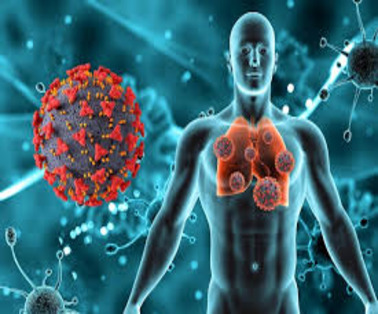Across India, an outbreak H3N2 Influenza of a respiratory illness with symptoms of cold, sore throat and fever accompanied by fatigue has been observed since December 2022 and January 2023.
Key Points On H3N2 Influenza OutBreak
- On March 4, the Indian Council of Medical Research (ICMR) confirmed that Influenza Sub-type H3N2 has been causing this illness.
- In the first nine weeks of 2023, cases of H3N2 have been rising, according to ICMR data. Since December 15, this virus has been the dominating one circulating.
- The virus appeared to lead to more hospitalisations than other influenza subtypes. There was very little difference in symptoms between COVID-19 and the illness brought on by Influenza A H3N2.
- Due to the sudden weather shift and the temperature changing from extreme cold to warm, the flu symptoms are getting more prominent in people.
Influenza
- Humans can be infected with avian, swine and other zoonotic influenza viruses, such as avian influenza virus subtypes A(H5N1), A(H7N9), and A(H9N2) and swine influenza virus subtypes A(H1N1), A(H1N2) and A(H3N2).
- Human infections are primarily acquired through direct contact with infected animals or contaminated environments, these viruses have not acquired the ability of sustained transmission among humans.
- Influenza is a viral disease. It is caused by Orthomyxovirus (influenza virus) pathogen.
- It is a contagious disease, which means it can be spread easily from person to person.
- Viruses that cause influenza spread from person to person mainly by droplets of respiratory fluids sent through the air when someone infected with the virus coughs or sneezes.
Types of Influenza
There are four types of influenza viruses: types A, B, C and D:

H3N2 VIRUS
- H3N2 virus is a type of influenza virus called the influenza A virus. It is a respiratory viral infection that causes illnesses every year. This subtype of influenza A virus was discovered in 1968 in humans.
- The virus derives from types of protein strains of the influenza A virus – hemagglutinin (HA) and neuraminidase (NA).
- HA has over 18 different subtypes, each numbered H1 to H18 while NA has 11 different subtypes, each numbered N1 to N11. The H3N2 is a combination of the two protein strains of the influenza A virus.
- Influenza type A viruses are of most significance to public health due to their potential to cause an influenza pandemic.
- Influenza type A viruses are classified into subtypes according to the combinations of different virus surface proteins hemagglutinin (HA) and neuraminidase (NA).
- Influenza A viruses are the only influenza viruses known to cause flu pandemics (i.e., global epidemics of flu disease
Symptoms of H3N2 Influenza
Symptoms of H3N2 include the following-
- Fever
- Chills
- Cough
- Nausea
- Vomiting
- Sore throat
- Muscle and body aches
- Diarrhea
- Runny nose and sneezing
Treatment of H3N2 Influenza
Regular over-the-counter medications for fever, cough or headaches can be consumed to relieve the symptoms. Annual flu shots for the influenza virus should be administered and taken around this time
Prevention of H3N2 Influenza
- Regular hand washing with proper drying of the hands
- Good respiratory hygiene – covering mouth and nose when coughing or sneezing, using tissues and disposing of them correctly
- Early self-isolation of those feeling unwell, feverish and having other symptoms of influenza
- Avoiding close contact with sick people
- Avoiding touching one’s eyes, nose or mouth
H1N1 Pandemic
- In June 2009, the World Health Organization (WHO) declared the H1N1 pandemic. This is also popularly referred to as the swine flu pandemic.
- The circulating strain of that virus is now H3N2 and, therefore, it is a normal influenza strain
- The first cases were reported in North America in April 2009. By the time WHO declared it a pandemic, it had already spread to 74 countries.
- Before the H1N1 pandemic in 2009, the influenza A (H1N1) virus had never been identified as a cause of infections in people.
- In August 2010, WHO declared the end of the swine flu pandemic, considered one of the shortest pandemics. Since then, the novel virus has gone through many mutations and the swine flu pandemic was officially declared ended in August 2010.
- The influenza A H3N2 virus also caused the 1968 pandemic that killed over a million people.
- 1968 flu pandemic, also called Hong Kong flu pandemic of 1968 global outbreak of influenza that originated in China in July 1968 and lasted until 1969–70.
- The outbreak was the third influenza pandemic to occur in the 20th century; it followed the 1957 flu pandemic and the influenza pandemic of 1918–19.
- Influenza has affected humans for over 6,000 years, causing pandemics at regular intervals. During the 1918 Spanish flu
- In 2013, India saw a massive outbreak of swine flu.
To Download Monthly Current Affairs PDF Click here
Click here to get a free demo
Everything About CLAT 2025



